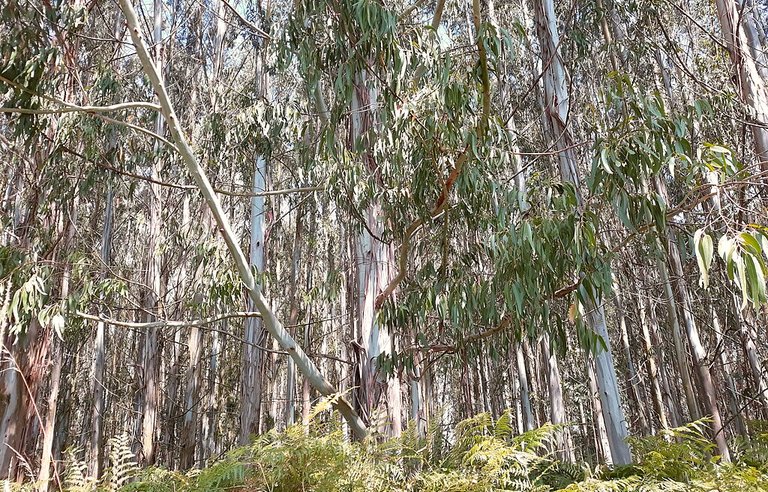Fewer bird species in eucalyptus plantations

There are fewer birds in eucalyptus plantations than in native forests and pine plantations, a study by the UPV has shown. The study has highlighted the urgent need to conserve and restore indigenous forests and the need to rethink the use of eucalyptus in forestry.
Plantations of pine and eucalyptus planted in place of local forests have been expanding in the northern part of the Iberian peninsula. In the Autonomous Community of the Basque Country, for example, the area of eucalyptus plantations has doubled between 2005 and 2024, due to the substitution of pine for eucalyptus due to pine diseases.
The BEZ-EKOFISKO research group is studying the effects of eucalyptus plantations on plants, birds and soil microorganisms. The work they have now published has measured how the diversity of bird species varies in relation to native forests and pine and eucalyptus plantations, and how these differences occur (among others, vegetation, surrounding landscape, forest structure, location and dead wood).
The counting and study of bird species has been carried out in twenty departments of each type of tree system in the Basque Country. And on the other hand, they have studied the interactions of birds with plants. Thus, they have observed that bird species vary according to the type of system and that in eucalyptus plantations there are significantly fewer bird species than in native forests or pine plantations: the richness and abundance of the species are both lower. On the other hand, although pine plantations are also inhabited by some species of forest birds, the bird communities are not the same as those of indigenous forests.
The results of the study have shown that native forests are important for sustaining bird communities. Native plant species provide essential resources for both forest birds (such as the claw, the squash or the common waist) and those living in open areas. In fact, UPV/EHU researchers have also detected open field bird species in native forests (such as the common virulent and the carnival).
The results of the study of the interactions between birds and plants have shown that birds use more native vegetation than exotic vegetation; they have very little interaction with exotic plants. In fact, the diversity and structure of native forest plant species offers birds a wider choice than simpler tree plantation plant communities. On the other hand, researchers have detected that birds are mainly related to the plants (and less to the trees) that produce the fruit.
As a result, the researchers point to the urgent need to conserve and restore native forests if bird diversity is to be maintained. It is important to use sustainable forest management strategies that prioritize biodiversity conservation in order to have resilient landscapes.
The need to rethink eucalyptus plantations has also been highlighted. In Bizkaia, for example, the ban on eucalyptus cultivation is coming to an end (2025) and it is time to make decisions. In view of these results, the researchers believe that it is better to discard eucalyptus and address other pathways.
Buletina
Bidali zure helbide elektronikoa eta jaso asteroko buletina zure sarrera-ontzian










